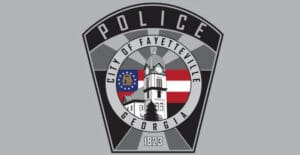If you were living in Peachtree City in the late 1990s, you probably remember the infamous black bear scare.
As Public Information Officer Betsy Tyler remembers, somewhere around 1997 or spring 1998, a young black bear caused a commotion during his northward trek along the Flat Creek basin on his way to only bears know where.
Tyler remembers activating the crude city-wide cable alert system, warning residents on an early evening in spring to beware of a roving black bear.
“He enjoyed our cart path system,” Tyler remembered, “and visited a couple of golf courses along the way.”
The youngster rambled on out of Fayette County, eventually getting trapped unharmed along a metro interstate highway and carted off to be released in less populated areas.
Seeing a black bear in Georgia, even in metro Atlanta, is not unusual, especially during spring, according to the Georgia Department of Natural Resources’ Wildlife Resources Division.
That’s because during spring and summer, young male bears that are “on their own” for the first time sometimes venture into suburbs and even urban areas.
Adult males typically force these young males out of familiar territory in what would be considered traditional bear range. The young bears roam as they try to establish their own territory.
The sightings that result often cause unnecessary alarm. According to state bear biologist Adam Hammond of the Georgia Department of Natural Resources, Wildlife Resources Division, here’s how best to respond:
Leave all bears alone. Usually, they are only passing through an area.
Stay a safe distance away.
Never, under any circumstances, feed a bear.
“Even worse, attempting to ‘tree’ or corner a bear compromises both the safety and welfare of the public and the bear,” Hammond said.
Unless there is evidence of aggressive behavior or habituation to people, there is no real cause for alarm, he said.
If left alone, these young male bears, referred to as “transient” bears, usually return to more traditional bear range – the North Georgia mountains, the Ocmulgee River drainage system in central Georgia or the Okefenokee Swamp in the southeastern part of the state.
Increased bear sightings in North Georgia indicate that the bear population in this area is healthy and possibly expanding its range. Meanwhile, Georgia’s growth and development is increasing the population of people in and around areas where bears are more common.
The black bear is a symbol of Georgia’s natural diversity, the only bear found in the state and a high-priority species in the state’s Wildlife Action Plan, a comprehensive conservation strategy.
Though now considered the most common bear in North America, the species was nearly eradicated from Georgia by the 1930s due to unregulated market hunting, poaching, and large-scale habitat loss.
Sound wildlife management practices have restored Georgia’s black bears to a thriving population estimated at 5,100 bears statewide.
While there is no way to prevent a bear from wandering into a neighborhood, there are ways to discourage it from staying:
Never feed a bear. Keep items such as grills, pet food and bird feeders off-limits to bears. Clean and store grills when not in use. Keep pet food indoors and remove bird feeders (April-November) if bears frequent your area.
Convert to “bear-proof” garbage containers, or store garbage in the garage or other enclosed area until the morning of pick-up day.
Properly securing food and garbage prevents bears from accessing these non-natural, human-provided food sources, and helps avoid the unhealthy process of habituation that occurs when bears easily obtain food from people and begin associating humans with food. They then lose their innate wariness of people and that is not only bad for people, but the bears as well.
For more information regarding black bears, visit www.georgiawildlife.com or contact a Wildlife Resources Division, Game Management office. The public also can visit their local library to check out a copy of an informational DVD entitled, “Where Bears Belong: Black Bears in Georgia.”












Leave a Comment
You must be logged in to post a comment.